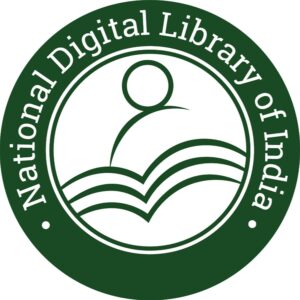The library, as an institution, has undergone significant transformations over the course of human history. From the ancient Library of Alexandria to the modern, sprawling complexes housing millions of physical volumes, libraries have always been centers of knowledge and learning. However, the advent of the digital age has ushered in a new era for libraries, giving rise to what we now commonly refer to as “digital libraries.”
Digital libraries offer a plethora of advantages, such as instant access to a vast array of resources, the ability to search and retrieve information efficiently, and the democratization of knowledge on a global scale. Yet, they are not without their challenges. Issues related to technology, user experience, legality, ethics, and sustainability pose significant hurdles that need to be addressed.
Given the rapidly evolving landscape of information science and technology, it is crucial to examine both the challenges and opportunities that digital libraries present. This article aims to provide a comprehensive overview of these aspects, offering actionable insights for professionals in the field of Library and Information Science, as well as for educators, students, and policymakers. By delving deep into the complexities of digital libraries, we hope to leave no question unanswered for the reader.
What is a Digital Library?
The concept of a digital library is often surrounded by a myriad of definitions and interpretations, largely because it encompasses a wide range of elements, from technology and content to users and organizational structures. Understanding what constitutes a digital library is essential for grasping the challenges and opportunities that lie ahead.
Definition and Scope
A digital library is a collection of digital objects, including text, visuals, and audio-visual material, that are organized and made accessible through electronic means to fulfill the informational, educational, cultural, and recreational needs of its users. Unlike traditional libraries, where physical space and tangible materials are key, digital libraries exist in a virtual space, often accessible via the internet or other digital networks.
The scope of a digital library is not confined to merely digitizing existing physical collections. It extends to creating a dynamic environment for the life cycle of digital information, from creation and acquisition to maintenance, retrieval, and use. Digital libraries can serve specialized roles, such as research repositories, or they can be more general in nature, offering a wide range of resources to a diverse audience.
Key Components
The architecture of a digital library is complex and involves several key components that work in tandem to provide a seamless user experience. These components include:
Types of Digital Libraries
Digital libraries can be categorized in various ways, based on their content, target audience, or the institutions that manage them. Some common types include:
Understanding the definition, key components, and types of digital libraries is foundational to exploring the challenges and opportunities they present. As we delve deeper into these aspects, we will uncover the intricacies that make digital libraries both a boon and a challenge in the modern information landscape.
Challenges in Digital Libraries
While digital libraries offer unprecedented access to information and resources, they also present a host of challenges that need to be meticulously addressed. These challenges can be broadly categorized into technical, user experience, legal and ethical, and sustainability challenges. Each of these categories encompasses specific issues that have implications for the effective functioning and long-term viability of digital libraries.
Technical Challenges
Data Storage
One of the most pressing technical challenges is the storage of an ever-increasing volume of digital content. As libraries expand their digital collections, they require robust and scalable storage solutions. The choice between on-premises, cloud-based, or hybrid storage solutions can significantly impact not only costs but also accessibility and data integrity.
Interoperability
Digital libraries often need to interact with other systems—be it other libraries, databases, or user interfaces. Interoperability issues can arise due to the use of different metadata standards, file formats, or software platforms. The lack of interoperability can severely limit the utility of a digital library, making it difficult for users to search across multiple platforms or for libraries to collaborate effectively.
Security
The digital nature of these libraries makes them susceptible to various security threats, including unauthorized access, data breaches, and cyberattacks. Ensuring the security of both the digital assets and the personal information of users is paramount. Libraries must employ robust encryption methods, secure access protocols, and regular security audits to mitigate these risks.
User Experience Challenges
Accessibility
Digital libraries must be accessible to all users, including those with disabilities. This involves not just compliance with legal standards such as the Americans with Disabilities Act (ADA) but also the implementation of assistive technologies and inclusive design principles to make the library universally accessible.
Usability
The user interface and experience are critical factors in the success of a digital library. Poorly designed interfaces can deter users and make navigation and information retrieval cumbersome. Usability testing and iterative design are essential for creating a user-friendly environment.
Information Retrieval
The vastness of digital libraries can make information retrieval challenging. Effective search algorithms, intuitive categorization, and reliable metadata are crucial for helping users find what they are looking for with minimal effort.
Legal and Ethical Challenges
Copyright Issues
Digital libraries often contain copyrighted material, making them susceptible to legal challenges. Libraries must navigate complex licensing agreements, adhere to fair use policies, and implement digital rights management systems to avoid copyright infringement.
Privacy Concerns
User data and behavior are often tracked to improve services, but this raises significant privacy concerns. Libraries must balance the need for personalization and analytics with the ethical obligation to protect user privacy.
Sustainability Challenges
Funding
Maintaining and updating a digital library requires consistent funding. Budget constraints can limit the acquisition of new materials, technology upgrades, and staffing, affecting the quality and scope of services.
Long-term Preservation
Digital formats can become obsolete, and data degradation is a real concern. Long-term preservation strategies, including regular data migration and the use of sustainable file formats, are essential for ensuring that digital assets remain accessible for future generations.
Addressing these challenges requires a multi-faceted approach that involves technological innovation, user-centered design, ethical considerations, and sustainable practices. By understanding and tackling these issues, stakeholders can unlock the immense potential that digital libraries offer.
Opportunities in Digital Libraries
While challenges in digital libraries are manifold, the opportunities they present are equally compelling. Advances in technology, shifts in user expectations, and broader societal trends offer avenues for innovation and growth. This section explores the opportunities that digital libraries can leverage to enhance their services, reach, and impact.
Technological Advancements
Artificial Intelligence
Artificial Intelligence (AI) has the potential to revolutionize various aspects of digital libraries, from content curation to user engagement. Machine learning algorithms can improve search and retrieval systems, making them more intuitive and responsive to user needs. AI can also assist in metadata generation, content recommendation, and even in answering user queries through chatbots, thereby enhancing the overall user experience.
Blockchain
Blockchain technology offers promising solutions for some of the most pressing challenges in digital libraries, such as data integrity, copyright management, and user authentication. By creating a decentralized and immutable ledger of transactions, blockchain can ensure the provenance and authenticity of digital assets. This technology can also facilitate secure, transparent, and automated licensing and copyright management processes.
Enhanced User Experience
Personalization
The ability to tailor services and content to individual users is one of the most exciting opportunities in digital libraries. Through data analytics and user profiling, libraries can offer personalized recommendations, reading lists, and even learning paths, thereby making the user experience more engaging and productive.
Collaboration
Digital libraries can serve as platforms for collaboration among users. Features like shared annotations, discussion forums, and collaborative filtering can foster a sense of community and collective knowledge-building. This not only enhances the user experience but also adds a social dimension to the traditionally solitary act of reading or research.
Open Access and Democratization
Open-source Platforms
The use of open-source software platforms for digital libraries can significantly reduce costs and increase flexibility. Open-source solutions are often community-driven, benefiting from the collective expertise of a global network of developers and librarians. This can accelerate innovation and make digital libraries more adaptable to emerging needs and technologies.
Global Reach
One of the most transformative aspects of digital libraries is their ability to make information accessible on a global scale. Open access policies can democratize knowledge, breaking down geographical and socio-economic barriers. This is particularly impactful for researchers and students in developing countries, who can gain access to world-class resources without the constraints of physical location.
Innovative Services
Virtual Reality
Virtual Reality (VR) offers exciting possibilities for making digital libraries more immersive and interactive. Virtual tours, 3D representations of historical artifacts, or even virtual study rooms can enrich the user experience and offer new ways to engage with content.
Augmented Reality
Augmented Reality (AR) can add a layer of interactivity and information to the physical world. In the context of digital libraries, AR can be used to enhance e-books, provide contextual information through mobile apps, or even offer interactive tutorials and guides.
In summary, the opportunities in digital libraries are as diverse as they are promising. By embracing technological advancements, focusing on user experience, advocating for open access, and exploring innovative services, digital libraries can not only overcome their challenges but also redefine the very landscape of information access and dissemination.
Case Studies
Successful Digital Libraries
Lessons Learned
Future Trends
Predictions for the Next Decade
Recommendations for Stakeholders
Conclusion
Digital libraries stand at the intersection of tradition and innovation, offering unprecedented access to information while grappling with a host of challenges. From technical issues like data storage and security to user experience concerns and legal hurdles, the path is fraught with complexities. However, the opportunities are equally compelling. Advances in technology offer the promise of smarter, more personalized libraries. Open access initiatives are democratizing information like never before, and innovative services are continually enriching the user experience.
For librarians, the call to action is clear: embrace the technological advancements, but do so with a keen eye on usability and accessibility. For policymakers, the focus should be on creating an enabling environment, where digital libraries can thrive without being stifled by legal and financial constraints. And for researchers in the field of Library and Information Science, the digital library space is a fertile ground for academic inquiry, offering myriad topics for research and exploration.
By collectively addressing the challenges and seizing the opportunities, we can usher in a new era for digital libraries—one that holds the promise of making knowledge more accessible, democratic, and enriching for all.














